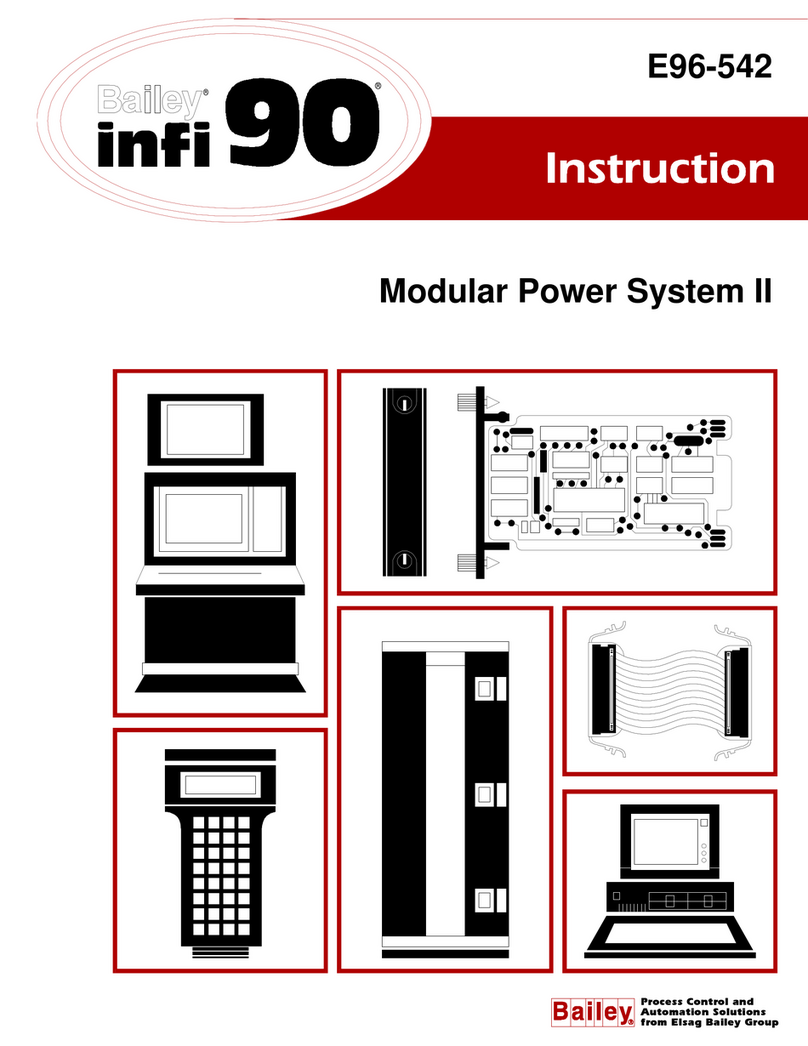
Table of Contents
Page
I-E96-508C iii
SECTION 1 - INTRODUCTION....................................................................................................1-1
OVERVIEW ..................................................................................................................1-1
INTENDED USER.........................................................................................................1-1
HARDWARE DESCRIPTION..........................................................................................1-1
Power Entry Panel..................................................................................................1-1
Fan Assembly ........................................................................................................1-1
Power Modules.......................................................................................................1-2
Module Mounting Unit ...........................................................................................1-2
Power Mounting Unit .............................................................................................1-2
FEATURES...................................................................................................................1-2
INSTRUCTION CONTENT .............................................................................................1-3
HOW TO USE THIS MANUAL .......................................................................................1-3
GLOSSARY OF TERMS AND ABBREVIATIONS .............................................................1-4
NOMENCLATURE ........................................................................................................1-4
REFERENCE DOCUMENTS..........................................................................................1-5
SPECIFICATIONS.........................................................................................................1-5
SECTION 2 - DESCRIPTION AND OPERATION........................................................................2-1
INTRODUCTION...........................................................................................................2-1
POWER DISTRIBUTION................................................................................................2-1
POWER ENTRY PANEL.................................................................................................2-3
DC Transfer Module...............................................................................................2-3
Bus Monitor Module ..............................................................................................2-3
FAN ASSEMBLY ...........................................................................................................2-4
MODULE MOUNTING UNIT..........................................................................................2-4
POWER MOUNTING UNIT ............................................................................................2-4
POWER MODULES ......................................................................................................2-4
STATUS SIGNALS ........................................................................................................2-5
Power System Status .............................................................................................2-5
Bus Voltage Status ................................................................................................2-6
POWER MODULE STATUS ...........................................................................................2-6
USER ALARM OUTPUTS ..............................................................................................2-7
SECTION 3 - INSTALLATION.....................................................................................................3-1
INTRODUCTION...........................................................................................................3-1
UNPACKING AND INSPECTION ....................................................................................3-1
Special Handling....................................................................................................3-1
General Handling...................................................................................................3-2
SYSTEM INSTALLATION...............................................................................................3-2
IEPEP04 POWER ENTRY PANEL WIRING .....................................................................3-3
DC Transfer Module...............................................................................................3-6
Bus Monitor Module ..............................................................................................3-7
Fan Assembly ........................................................................................................3-9
Power Modules.......................................................................................................3-9
IEPMU01/02 POWER MOUNTING UNIT INSTALLATION .............................................3-11
Required Tools .....................................................................................................3-11
Installing the PMU in the INFI 90 Cabinet ............................................................3-12
Wiring Instructions ..............................................................................................3-12
SECTION 4 - OPERATING PROCEDURES................................................................................4-1
INTRODUCTION...........................................................................................................4-1
LED INDICATORS ........................................................................................................4-1






























